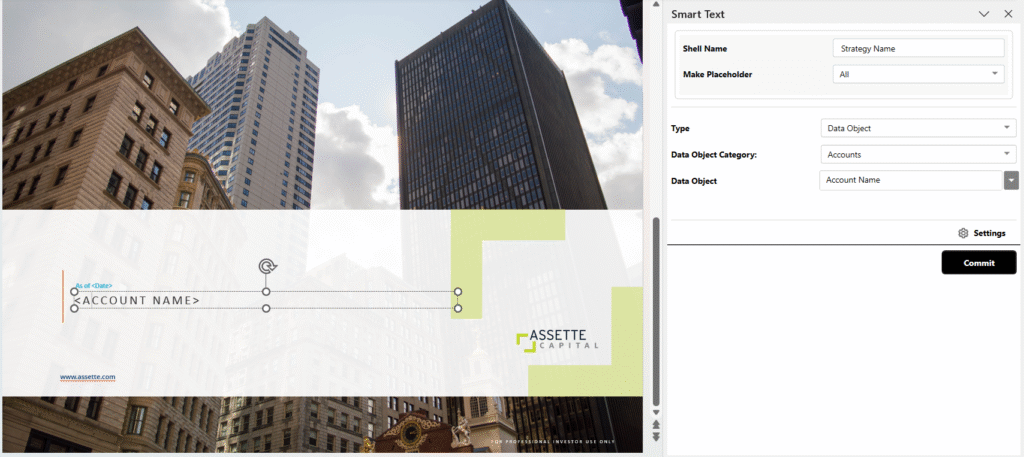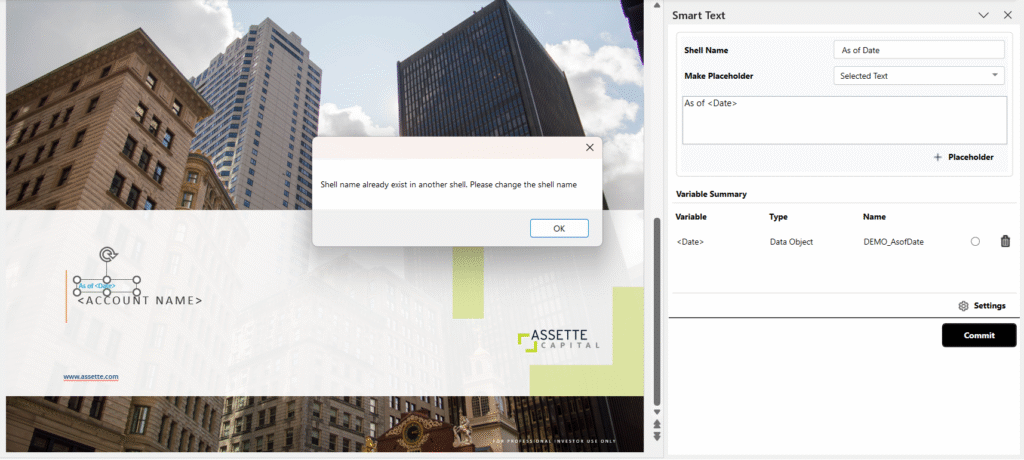The Shell Name field in the Fabrication Pane identifies each Smart Shell used within a Smart Page. Every Smart Shell—whether a Smart Text, Smart Table, or Smart Chart—must have a unique and descriptive Shell Name. The name is used internally by the Assette Editor to reference and manage fabricated content, and externally to help users recognize the purpose of each shell within the document.

The Shell Name serves as the identifier for each Smart Shell within a Smart Page. It ensures that each fabricated object is uniquely recognized by the system and by users when configuring, previewing, or publishing content. Proper naming conventions help maintain clarity across teams and prevent errors when working with multiple Smart Shells.
Uniqueness Requirement #
Each Shell Name must be unique within the same Smart Page. If a user attempts to assign a duplicate name, the system will display a warning message indicating that the Shell Name already exists. This validation prevents conflicts during fabrication and ensures that each shell can be accurately referenced.

Naming Guidelines #
To ensure consistency, readability, and clarity, the following naming guidelines are recommended when assigning Shell Names:
- Uniqueness: Each Shell Name must be distinct on the same Smart Page.
- Character Rules: The Shell Name may include alphanumeric characters. It is recommended to limit names to 30 characters or fewer, or approximately five words.
- Consistency: Use a consistent naming convention across Smart Pages. For example, always name “As of Date” shells the same way (e.g., “As of Date” rather than “Date Field” or “Report Date”). Consistent casing should also be used (e.g., “Date” rather than mixing “DATE” and “Date”).
- Clarity: The name should clearly communicate the shell’s purpose. Avoid placeholder or meaningless names such as “testtesttesttest” or “Untitled.”
- Sequential Naming: When multiple Smart Shells of the same type are used, append numbers to the name for easy distinction (for example, “Date 1,” “Date 2,” “Date 3”).
Best Practices #
When defining Shell Names, users should consider future maintenance and collaboration. Using meaningful, standardized names helps others understand the shell’s function, simplifies troubleshooting, and ensures that the fabrication process remains accurate and repeatable across Smart Pages and documents.